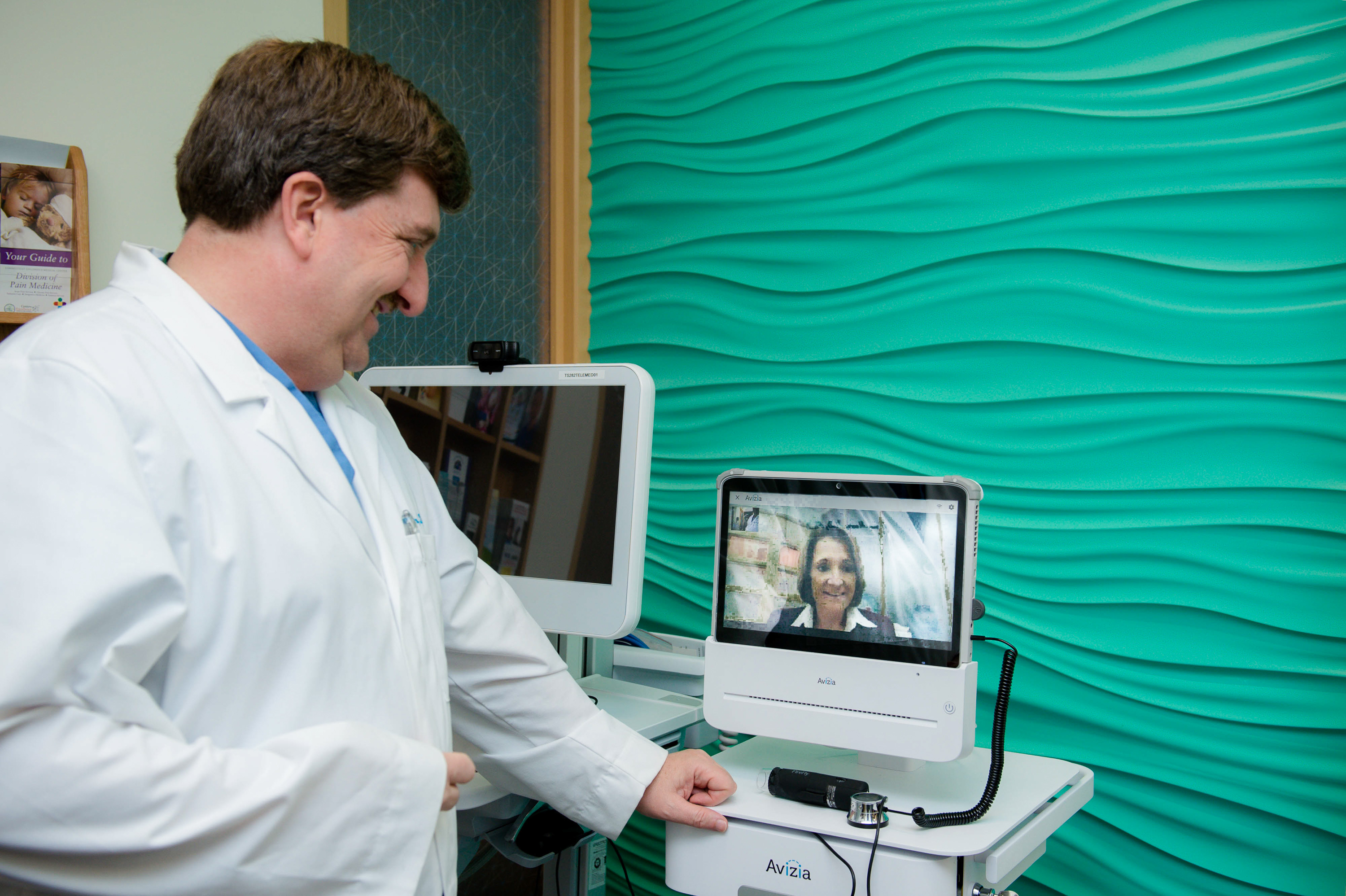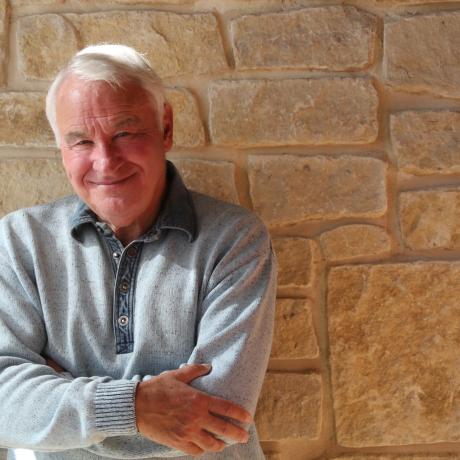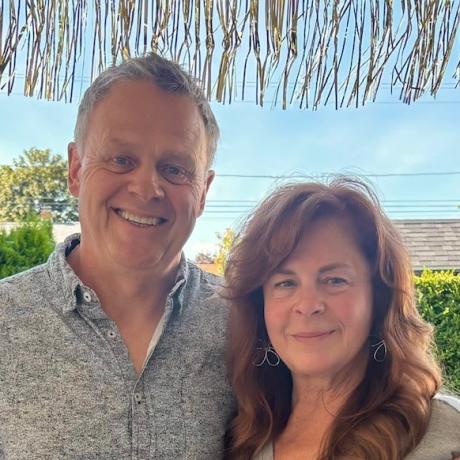Telemedicine is not only providing critical treatment to pediatric patients as close to home as possible—in this case, in their homes—it is transforming how Connecticut Children’s is delivering medical care across the region to kids like Alexandra, a 17-year-old from Danbury.
Alexandra’s Journey
Alexandra was the first baby born in Danbury Hospital, an event celebrated in the local newspaper. As she grew, there was more cause for celebration because Alexandra became a formidable athlete. A talented runner, she made the varsity team at Danbury High School when she was in ninth grade. She went on to be an all-state cross-country runner and a national runner in track and field events.

But in May 2019, Alexandra found that her running time was a little slower than usual, and she felt more tired than normal. When she was beaten by a runner who had previously lost races to her, she knew something was wrong. Her coach suggested she get some blood work done to try and identify the problem. A series of escalating tests led her to Connecticut Children’s, where oncologist/hematologist Natalie Bezler, MD, gave the diagnosis no one wanted to hear: Alexandra had acute myeloid leukemia, a type of blood cancer.
Alexandra’s treatment plan included four rounds of chemotherapy over the span of nine months. Altogether, she was in the hospital for 160 days—nearly six months—including five weeks in the Intensive Care Unit during the final round of chemotherapy.
For kids, a telemedicine visit is actually more natural than an office visit, because most of them spend a lot of time on the phone.
“It was hard trying to balance work with her being an hour away and not progressing and having setbacks,” says her father, Chuck. “It was very difficult. I work in Manhattan and she would call for me to come and I would leave on the first train out of Grand Central and make a 3 hour trip to see her. She had to learn how to walk again because she had been in bed so long. She was on a feeding tube at one point. She couldn’t sit up without crying in pain.”
But in the end, Alexandra’s fitness, competitiveness and determination helped her push through the challenges of chemotherapy. “She’s a little warrior,” Chuck says. “She couldn’t wait to begin the treatment because she wanted to get this over with.” Alexandra finished her last course of chemotherapy in February 2020.
Telemedicine to the Rescue
Although she has completed treatment, Alexandra still needs to have her blood checked on a regular basis and needs frequent follow-up visits to be sure she stays healthy. And that has presented a new problem. “Because of Alexandra’s chemotherapy, her immune system is suppressed,” her father explains. “And with COVID-19, you don’t really want to be near a hospital. So, telemedicine has been great. The doctors can look at her and examine her and have the conversations we would have if we were in Hartford.”
Thanks to telemedicine, Alexandra has been able to complete her follow-up visits remotely during the pandemic, which is a good thing because her immune system has been compromised by her cancer treatments.
The typical telemedicine visit for Alexandra is preceded by a blood test at a local clinic. The visit itself is set up through Connecticut Children’s app, which also allows the doctor and the family to have Alexandra’s medical records literally at the fingertips. Then, at the appointed time, Dr. Bezler calls and begins the visit.
“They go over the blood counts to make sure everything is trending in the right direction,” Chuck says. “Dr. Bezler will ask about her activities, her appetite, how she’s feeling overall, what her exercise regimen is, what foods she’s eating and what she needs to do to have a well-balanced diet. On a recent visit, Dr. Bezler said she was low on iron, so she prescribed a multivitamin with iron. It’s typically more of a checkup these days because she’s past the chemotherapy. It’s been great to be able to dial in to a video visit and talk with Dr. Bezler and have an engaging conversation with Alexandra and my wife and myself.”
Today, Alexandra is running again, three and four miles a day, and will be attending Sacred Heart University in Fairfield on an athletic and academic scholarship.
Telemedicine Transforming Medical Access
Alexandra is not the only child who is getting access to medical care at Connecticut Children’s remotely. When the COVID-19 pandemic hit Connecticut in March, Connecticut Children’s cancelled all elective surgeries and non-urgent visits as a matter of safety and began implementing telemedicine visits, now booking more than 600 video visits every day. By the first week in May, physicians had completed more than 11,000 video visits, including nearly 1,000 telemedicine visits in Fairfield County.
But telemedicine itself is something Connecticut Children’s has offered for several years. A conceptual and practical framework was in place when the pandemic struck, and that is largely due to Joyce Lagnese, a longtime supporter who not only made a substantial gift for telemedicine, but who was instrumental in persuading Connecticut Children’s to initiate the program.

Birth of Telemedicine at Connecticut Children’s
One of the big advantages of telemedicine is the fact that it lets caregivers see the child in context, in their home. This circumstance provides a great deal of insight into the factors that affect child health.
Joyce is one of the founding principals at DanaherLagnese law firm who has specialized in medical malpractice for more than 30 years. She’s worked with Connecticut Children’s since its founding, and with its predecessor, Newington Children’s Hospital.
As part of her job, Joyce reads all of the major medical journals, and a few years ago, in the course of that reading, she kept coming across references to telemedicine. In 2015, she proposed making a presentation on the subject to the medical staff at Connecticut Children’s. “I knew it was out there,” she says, “but it hadn’t gained traction in a medical sense. Most hospitals had telemedicine in some form, but it wasn’t for mainstream activity.”
Part of Joyce’s presentation was focused on the example of the Children’s Medical Center of Dallas, in Texas, which was operating a very large and successful telemedicine program. As it happened, one of the people in the audience was James Moore, MD, PhD, who designed the Dallas program and who had just been hired to head Connecticut Children’s Neonatal Intensive Care Unit (NICU). The two of them connected, and the seeds were planted for a new telemedicine program.
With Joyce’s philanthropic backing, the hospital purchased two telemedicine carts. These complex and sophisticated carts allowed specialists at Connecticut Children’s to closely examine patients at a distant hospital and advise local doctors on how to perform specialized procedures. These remain tremendous tools, but when COVID-19 happened, the nature of telemedicine had to evolve—and it had to happen quickly.
An Evolving Technology
With telemedicine, families can save hours of travel time and children can stay in a comfortable, safe environment.
Because of the COVID-19 pandemic, people couldn’t casually go to a local clinic to be connected to a doctor in Hartford on a specialized machine; they were sheltering in place at home. And there were far too many people to serve with two available carts. The solution was to add smartphones, tablets and computers to the medical toolbox.
Within the space of a month, telemedicine became common in every single corner of the hospital and across all of Connecticut Children’s 39 locations. The current projection is that even after the pandemic subsides, telemedicine will account for as much as 40 percent of patient visits.
“The clinic-to-clinic video visits we have with the carts were and are important,” says Jeff Sargent, the Director of Virtual Health at Connecticut Children’s. “They’re in line with our expansion strategy. We now have outposts, and we need to connect those outposts to the mothership. We do that through those clinic-to-clinic communications. So, an advanced-practice nurse in Danbury will talk to a specialist in Hartford by video, we’ll speak with patients in our South Hadley, Massachusetts, office, and so forth. But this new approach to telemedicine lets us meet patients where they are, which is on their phone.”
For the parents, the process is extremely simple. They use an app on their phone that allows them to set up the appointment, and when, when the appointment time arrives, the doctor calls the parents and begins the video visit.
Putting the “Connect” in Connecticut
James Moore, MD, Division Head, Neonatal Intensive Care Unit and Vice President of Clinical Network Development, uses a telemedicine cart to speak with donor Joyce Lagnese, who worked with Dr. Moore to establish Connecticut Children’s telemedicine program.
The telemedicine program at Connecticut Children’s has been growing so quickly because telemedicine, and the broader concept of virtual health, offers a large number of benefits—benefits that are above and beyond the immediate demands of COVID-19.
One is convenience. “Until now,” Joyce says, “a doctor appointment meant you get in the car, drive there and find a place to park, go to the office and get in the elevator and so forth. So, a 15-minute visit takes up two-and-a-half hours of time.
Then there are children who are so sick that the trip to the hospital itself poses health risks. That trip should only be taken if it’s absolutely necessary, and telemedicine helps reduce the number of unnecessary trips. That benefit doesn’t just apply to at-risk children. Telemedicine visits serve as a triage tool more generally, helping care providers determine which children really do need the hospital’s facilities and which can be treated effectively in their homes.
With telemedicine, if a child lives in Westport—or Los Angeles—he or she can have the specialist come to him or her. And even if the video exam reveals a condition that needs physical intervention, the parent can take the child to a local hospital, and the Connecticut Children’s specialist can use a video conference to help a local doctor provide appropriate care.
Connecticut Children's pediatric experts are advancing care for kids—Thanks to people like you.
Latest Articles

The Most Advanced Care for Our Tiniest Patients

Connecticut Children's Receives Historic $50 Million Gift from Philanthropist Tom Golisano
